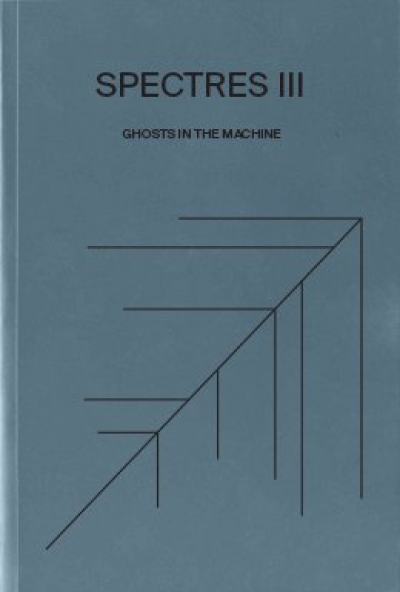
Spectres III. Ghosts in the Machine / Fantômes dans la machines
The expression ‘ghost in the machine’ emerged within a particular context, namely as a critique of Cartesian dualism’s separation of soul and body, and thus served to revive a certain mechanistic materialism. In simple terms, this critique denies the existence of an independent soul (the ‘ghost’) contained in a corporeal organism (the ‘machine’). It asserts, on the contrary, that the ‘soul’ is just a manifestation of the body—that ultimately they are one and the same. Although this remains a fraught question, always accompanied by the risk of slipping into the register of belief, it is resurfacing today in relation to the emergence of artificial intelligences: Can there be such a thing as an artificial intelligence? Can such an intelligence really add up to something more than the sum total of the binary operations that generate it? And what exactly is the ‘artificial’? The artificial always brings with it the fantasy of emancipation and autonomy, and a break with a supposedly natural order of things. It is subversive. AI, precisely in so far as it is artificial, embraces this subversion, hybridizing the Promethean and the Faustian, heralding as many promises as potential dangers, and raising the stakes as high as the survival or extinction of humanity itself. In this respect, the domain of musical creation constitutes a kind of front line, at once a terrain of exploration for possible applications of AI and a domain that boasts an already substantial history of the integration of machines and their calculative power into creative processes. From algorithmic composition to methods of resynthesis, from logical approaches to the creation of cybernetic systems, from the birth of computer music to neural networks, for more than half a century now music has been in continual dialogue with the binary universe of electron flows and the increasingly complex systems that control them. Each of the texts included here, in its own way, reveals a different facet of the strange prism formed by this alliance. [publisher’s note]
De la composition algorithmique aux méthodes de resynthèse, de l’approche logique à la création de systèmes cybernétiques, de la naissance de l’informatique musicale aux réseaux de neurones, la musique, depuis plus d’un demi-siècle, a entamé un dialogue ininterrompu avec l’univers binaire des flux d’électrons et des systèmes de plus en plus complexes qui les gouvernent. Les textes de Spectres #03 racontent, chacun à leur manière, une face différente de ce prisme étrange que forme une telle alliance. Ils projettent chacun un spectre particulier, révèlent un fantôme, et évoquent une apparition composite d’idées, d’électricité et d’opérations. [note de l’éditeur]
Contributions: Keith Fullerton Whitman, Émilie Gillet, Steve Goodman, Florian Hecker, James Hoff, Roland Kayn, Ada Lovelace, Robin Mackay, Bill Orcutt, Matthias Puech, Akira Rabelais, Lucy Railton, Jean-Claude Risset, Sébastien Roux, Peter Zinovieff.
Bilingual / Bilingue EN / FR.










